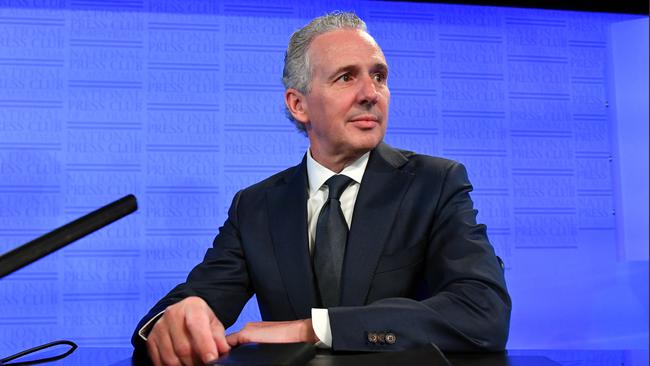Telstra profit plunges 40pc as NBN costs hit
Telstra has posted a 40 per cent drop in full year net profit, dragged down by the NBN.

Telstra has posted a 40 per cent drop in full year net profit, with the improvement in the mobile market unable to contain the damage to the telco’s bottom line caused by the National Broadband Network (NBN).
Net profit for the year ended June 30 decreased 39.6 per cent to $2.1 billion, while total full year income for the period slipped 3.6 per cent to $27.8 billion, landing right in the middle of the forecast range of $26.2bn to $28.1bn.
The telco has declared a full-year dividend of 16c. It paid a full year dividend of 22 cents in FY 2018 and 31 cents in FY 2017.
Telstra reported an interim dividend of 8 cents per share in the first half of fiscal 2019, 27 per cent lower compared to the same period in FY2018.
Underlying EBITDA (excluding restructuring costs) decreased 11.2 per cent to $7.8 billion for the full year, with Telstra absorbing around $600m of NBN-induced lost earnings during the period.
Telstra shares have risen since it revealed its Telstra 2022 transformation plan in June 2018, with the market welcoming the telco’s efforts to make itself a leaner, more efficient business.
On Thursday they closed down 1.78 per cent at $3.87.
The initiative designed to take costs out of the business has already seen Telstra accelerate its plans to cut 8000 jobs from its direct workforce by the end of fiscal 2022 and cut a quarter of its 40,000-odd contracted workforce, including outsourced customer service and call-centre staff.
In May, Telstra said that the fast-tracked process will see it complete approximately 75 per cent of the job cuts flagged as part of the T22 program, with total remaining restructuring costs, after financial 2019, to be in the vicinity of $350m.
Having overhauled its consumer and enterprise plans in June, Telstra is aiming to garner EBITDA benefits of around $500 million per annum from the T22 program.
Telstra boss Andrew Penn said the full year numbers highlighted the reasons the telco embarked on its “Telstra 2022” strategic overhaul.
“Notwithstanding the intense competitive environment and the challenging structural dynamics of our industry, it is a year in which I believe we can start to see the turning point in the fortunes of the company from the changes we have embraced,” Mr Penn said.
As part of the turnaround, Telstra has sold three international data centres in Europe and Asia for $160m to global private equity firm I-Squared Capital, the owners of Hutchison Global Communications.
The three data centres predominantly provide services to Telstra’s International Enterprise customers. The agreement is subject to conditions and is expected to be completed in first half of full year 2020.
Telstra added more than 378,000 net retail postpaid handheld mobile services during FY19, including 181,000 from low-cost brand Belong, taking retail mobile postpaid handheld services to 8.2 million.
Over 230,000 wholesale MVNO mobile prepaid and postpaid services were also added during FY19, bringing total wholesale services for the company to over 1.2 million.
Telstra’s total mobile revenue for the full year rose 1.6 per cent year-on-year, up from $10.3bn to $10.5bn.
Meanwhile, fixed line revenue slid 9.4 per cent, down from $5.7bn to $5.2bn.
Telstra added 107,000 new fixed-line services during the period, including 51,000 from Belong, to take its overall customer base to 3.7 million. It also picked up 659,000 new NBN customers during the full year and has a NBN market share of 49 per cent.
Telstra has forecast total income to slip further in full year 2020, coming in the range of $25.7bn to $27.7bn. However, underlying EBITDA set to land in the range of $7.3bn to $7.8bn, rising by up to $500m.
According to Telstra, FY20 is set to be toughest year for its fixed business, with the NBN expected to strip up to $1 billion from its bottom line.
Mr Penn said that although the reported financial trends in FY19 were challenging, underlying trends were expected to improve over the course of FY20.
“Returning our business to growth will take time. However, I have great confidence that our strategy can arrest the decline in our earnings and create opportunities for growth.”
“Today we are already a very different, much simpler and more customer focussed organisation than we were a year ago and we are well positioned for the era in which we are about to head – the 2020s,” he said.




To join the conversation, please log in. Don't have an account? Register
Join the conversation, you are commenting as Logout